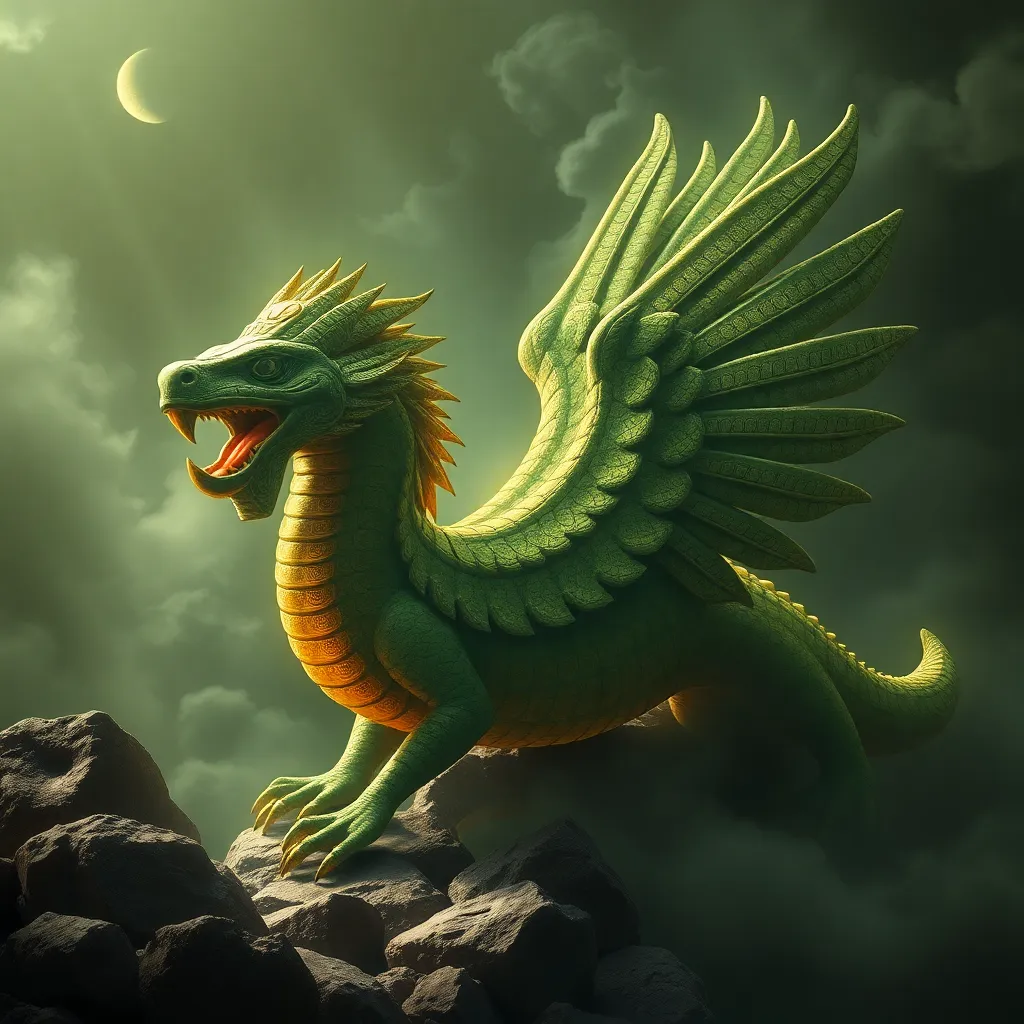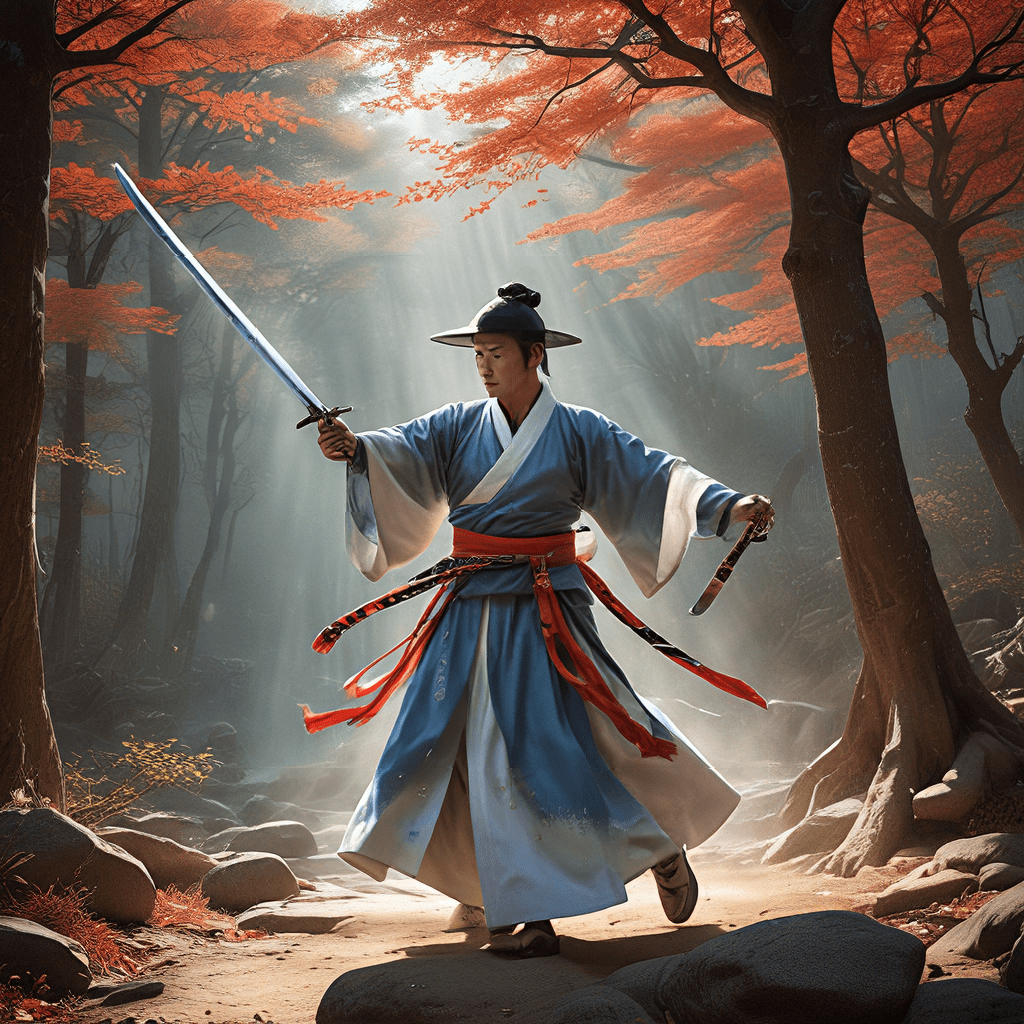Quetzalcoatl in the Popol Vuh: The Feathered Serpent in Mayan Creation Myths
I. Introduction to Quetzalcoatl
Quetzalcoatl, often referred to as the Feathered Serpent, is one of the most significant deities in Mesoamerican mythology. This god is a complex figure, associated with creation, wind, and wisdom, embodying both the earthly and celestial realms. The Feathered Serpent symbolizes the blending of the terrestrial and divine, representing the duality of existence.
The significance of Quetzalcoatl in cultural mythology extends beyond mere worship; he is a central figure in various creation stories, rituals, and societal norms among ancient Mesoamerican civilizations, particularly within the context of the Aztec and the Maya. This article aims to explore Quetzalcoatl’s role in the Popol Vuh, the sacred book of the Maya, which provides profound insights into their beliefs and values.
II. The Popol Vuh: A Brief Overview
The Popol Vuh, often referred to as the “Book of the People,” is a foundational text of the K’iche’ Maya, dating back to the 16th century. Compiled by anonymous authors, it captures the mythology, history, and cosmology of the Mayan civilization, serving as a vital source of information about their culture.
Key themes within the Popol Vuh include creation, heroism, and the relationship between gods and humans. The narrative structure is rich with stories of creation, the adventures of hero twins, and the struggles against evil forces. Understanding this text is crucial for grasping the complexities of Mayan beliefs, as it encapsulates their worldview and spiritual practices.
III. The Role of Quetzalcoatl in Mesoamerican Mythology
Quetzalcoatl stands out among Mesoamerican deities, often compared to other significant gods such as Tezcatlipoca and Tlaloc. While Tezcatlipoca represents the darker aspects of existence, Quetzalcoatl embodies light, knowledge, and order. This dichotomy highlights the balance of forces in Mesoamerican spirituality.
- Symbolism of the Feathered Serpent: Quetzalcoatl is frequently depicted as a serpent adorned with feathers, symbolizing the connection between earth and sky. This imagery conveys themes of duality and transformation, making him a significant figure in various myths.
- Attributes and Powers: Quetzalcoatl is associated with wisdom, wind, and life. His powers encompass creation, teaching, and benevolence, distinguishing him from more violent deities.
IV. The Creation Myth in the Popol Vuh
The creation story within the Popol Vuh begins with the primordial sea and the sky, where the gods convene to create the world. In this narrative, Quetzalcoatl plays a pivotal role, collaborating with other deities to bring forth life. The gods initially create animals, but they soon realize that these creations lack the ability to worship them.
Key characters in this creation narrative include:
- Tepeu: The Creator God who conceives the world.
- Gucumatz: Another name for Quetzalcoatl, symbolizing the Feathered Serpent.
- Heart of Sky: The god responsible for rain and thunder.
Quetzalcoatl’s involvement in the creation process is marked by his desire to create beings who could honor the gods. This desire leads to the creation of humans, emphasizing his role as a benevolent deity concerned with the welfare of humanity.
V. Quetzalcoatl’s Influence on Humanity
In the Popol Vuh, the creation of humans is a significant act that reflects Quetzalcoatl’s influence. The gods create humans from maize, a staple of the Mayan diet, symbolizing life and sustenance. Quetzalcoatl’s choice to use maize highlights the importance of agriculture and nourishment in Mayan culture.
Quetzalcoatl’s role extends beyond creation; he shapes human destiny and culture through his teachings. His lessons emphasize the importance of knowledge, morality, and the balance between nature and society. The moral teachings derived from his actions serve as guiding principles for the Maya, reinforcing values such as respect for the earth and community.
VI. Themes of Duality and Transformation
Quetzalcoatl embodies the theme of duality, representing both the earthly and the divine. His ability to transform between forms illustrates the Maya’s understanding of existence as a fluid interplay between various states of being. This duality is reflective of broader themes found in Mesoamerican mythology, where gods often embody contrasting forces.
The significance of transformation in Mayan creation myths is evident in the cyclical nature of life and death, creation and destruction. Quetzalcoatl’s ability to navigate these changes reinforces the notion that existence is not static but rather a continuous process of evolution and rebirth.
VII. Legacy and Cultural Impact
The legacy of Quetzalcoatl endures in modern culture, influencing contemporary interpretations of Mayan mythology. His representation as a benevolent figure continues to resonate in literature, art, and popular media, serving as a symbol of wisdom and enlightenment.
- Influence on Contemporary Interpretations: Scholars and artists alike draw on the rich symbolism associated with Quetzalcoatl, exploring themes of duality and transformation in their works.
- Representation in Art and Literature: From murals to modern novels, Quetzalcoatl’s image remains a powerful motif, showcasing the enduring fascination with Mesoamerican mythology.
VIII. Conclusion
In conclusion, Quetzalcoatl holds a significant place in the Popol Vuh, serving as a symbol of creation, wisdom, and the duality of existence. His role in the creation myth demonstrates the importance of balance and morality within Mayan culture, offering lessons that remain relevant today. The Feathered Serpent’s legacy continues to inspire and inform our understanding of Mesoamerican mythology, reminding us of the intricate connections between humanity and the divine.
As we reflect on the relevance of these ancient creation myths, we recognize the importance of preserving and understanding the rich cultural heritage they represent. Quetzalcoatl’s place in this broader context serves as a testament to the enduring power of mythology in shaping human experience and understanding.




